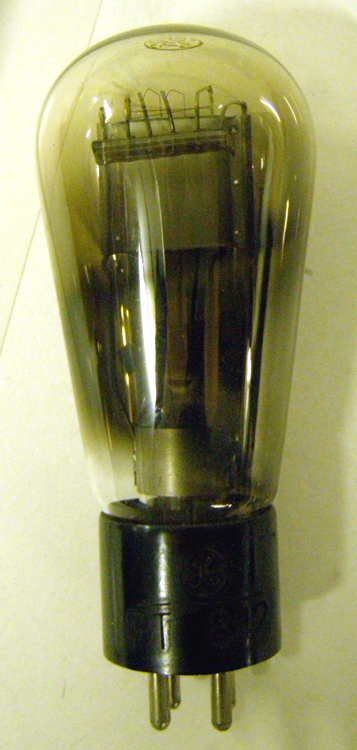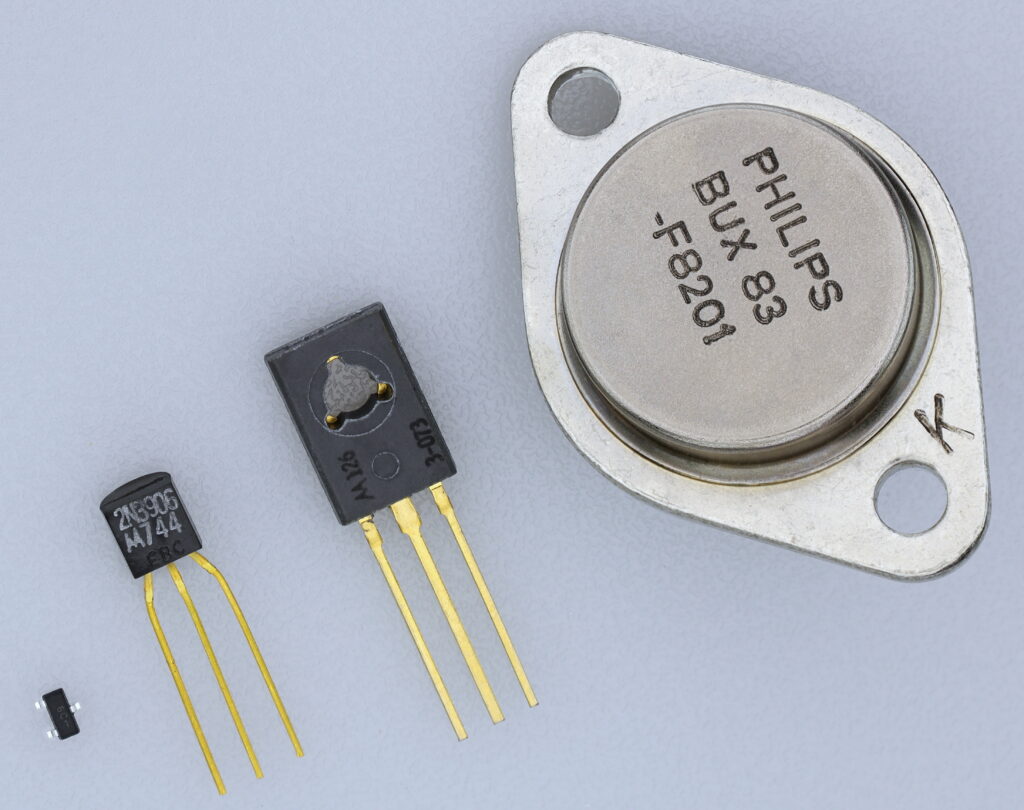Chances are you never think about transistors. The thing is, though, you’re surrounded by millions of them if not billions. There are several million in your computer, another million or so in the monitor, plus they’re in the remote, in your phone, possibly even in your charging cable. If you were to consider the sheer number of transistors you interact with daily, it would probably send you into a state of advanced paranoia.
The transistors surrounding you are almost too small to see and tend to hang around together on computer chips where hundreds of thousands fit on a square smaller than your phone’s home button. They form the basic building blocks of every single device you own with any sort of plug, acting as microscopic switches that, when combined together into the thousands and millions, react together almost as if by magic.
Oh, but it was not always so.

The basic building block of early computers were relays and vacuum tubes, large delicate glass monstrosities the size of light bulbs. It would take a space the size of a city block for enough vacuum tubes to power your iPhone and they would likely break so quickly that you’d never even get to play Minecraft.
The vacuum tube was an outgrowth of early research into radio waves in the 19th century. It became an essential part of early radio reception. One of the many purposes of vacuum tubes (and transistors today) is to act as an amplifier, keeping the characteristics of a signal while increasing its amount. Without amplifiers, we wouldn’t be able to listen to radio, watch television, or do nearly anything wirelessly. The signals that get to our devices are too weak to be used on their own, and amplifiers fix that.
Early computers used vacuum tubes in their capacity to control the flow of electricity. It’s possible to configure them as electronic “gates” which allow the same circuits to do different things. That very capability forms the basis of every electronic device on the planet. Unfortunately, delicate vacuum tubes burned out easily and were too large to do anything we’d call useful today.
Enter the transistor

One of the biggest consumers of vacuum tubes in the 20th century was AT&T. AT&T was, at the time, one of the leaders of the tech world. Their gigantic telephone switching systems made life possible and turbocharged the tech revolution. But, just changing vacuum tubes was a full-time job and creating tube-based telephone exchanges was rapidly becoming a challenge due to their size.
AT&T needed a solution that was smaller and “solid-state.” The term ‘solid-state” refers to anything with zero moving parts enclosed in a single solid enclosure. The idea of solid-state circuitry was a dream: small, reliable circuits that never needed maintenance. The only thing that was needed was a way to figure out how to do it.
Enter the transistor
Credit for the transistor goes to John Bardeen, Walter Brattain, and William Shockley who, working together in AT&T’s Bell Laboratories, changed the world and won the Nobel Prize for doing it. They were technically not the first people to experiment with what would later be called semiconductors, but their creation was the first one that was capable of replacing tubes.
Later improvements on the transistor made it possible to flat-mount them, creating the first integrated circuit “computer chips.” These three men set in motion a wave of miniaturization that hasn’t stopped today. That wave makes it possible for you to drive through a desert at 70mph (the legal limit). It also makes it possible to get a traffic report on your phone (using hands-free technology of course.) The transistor is one of the most influential inventions of all time. Not only that, it’s so common today that we can’t even imagine being without it.





